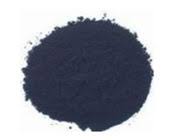Exploring the Art and Benefits of Natural Indigo Dyeing for Sustainable Fashion and Textiles
The Art and Science of Natural Indigo Dyeing
Natural indigo dyeing is a time-honored tradition that has captivated artisans and textile enthusiasts for centuries. This ancient technique, rooted in history and culture, involves extracting vibrant blue dye from the leaves of the indigo plant, primarily Indigofera tinctoria. With an increasing emphasis on sustainability and eco-friendly practices in modern fashion, natural indigo dyeing is experiencing a renaissance, appealing to consumers who appreciate the beauty and depth of natural colors.
The Art and Science of Natural Indigo Dyeing
One of the most appealing aspects of natural indigo dyeing is its versatility. The dye can be applied to a variety of fabrics, including cotton, silk, and wool, making it an excellent choice for creating diverse textiles. Artisans utilize different techniques, such as tie-dye, shibori, and batik, to create intricate patterns and unique designs. Each piece dyed with natural indigo carries a sense of individuality and craftsmanship, as variations in dyeing process and fabric type result in different shades and textures. The depth of color achieved through natural indigo is unparalleled, with hues that evolve over time, giving textiles a unique patina that adds character and charm.
natural indigo dyeing product

Moreover, the practice of natural indigo dyeing is deeply intertwined with cultural heritage. In many communities, indigo dyeing is not merely a craft; it is a form of storytelling, passed down through generations. Techniques vary by region, each with its own symbolism and significance. In Japan, for instance, indigo dyeing is often associated with traditional garments such as kimonos, while in West Africa, it plays a role in the creation of vibrant patterns that reflect the identities of various ethnic groups. These cultural connections not only preserve historical practices but also empower communities by promoting local artisanship and economic development.
The growing trend towards sustainable fashion has further propelled the interest in natural indigo dyeing. As consumers become more conscious of the environmental impact of their clothing choices, the demand for goods made with natural materials has surged. Eco-friendly dyes like indigo are free from toxic chemicals, making them safer for both the environment and the individuals wearing the garments. Brands that utilize natural indigo dyeing often highlight their commitment to sustainability, attracting customers who prioritize ethical consumption. This shift in consumer behavior holds the potential to rejuvenate traditional crafting techniques and ensure their survival in a rapidly changing world.
In conclusion, natural indigo dyeing is a remarkable fusion of art, science, and tradition. It embodies the principles of sustainability while celebrating cultural heritage and artisanal craftsmanship. As more individuals and brands embrace this ancient practice, the vibrant world of natural indigo dyeing continues to blossom, shaping the future of textiles in a way that honors the past. With its striking aesthetic and ecological benefits, natural indigo dyeing is not just a method of producing color; it is a movement towards a more thoughtful and sustainable approach to fashion and design.
-
Thermal Stability Analysis of Bromo Indigo Pigments
NewsJun.06,2025
-
Sulphur Black Dye Oxidation Process Optimization
NewsJun.06,2025
-
Lightfastness Testing of Bromo Indigo Dyed Denim
NewsJun.06,2025
-
Granule Size Distribution and Jeans Color Uniformity
NewsJun.06,2025
-
Gradient Dyeing Methods with Indigo Blue Granules
NewsJun.06,2025
-
Dyeing Temperature Effects on Sulphur Black Color Fastness
NewsJun.06,2025
-
Sulphur Black Dyes in Daily Use
NewsMay.07,2025

Sulphur Black
1.Name: sulphur black; Sulfur Black; Sulphur Black 1;
2.Structure formula:
3.Molecule formula: C6H4N2O5
4.CAS No.: 1326-82-5
5.HS code: 32041911
6.Product specification:Appearance:black phosphorus flakes; black liquid

Bromo Indigo; Vat Bromo-Indigo; C.I.Vat Blue 5
1.Name: Bromo indigo; Vat bromo-indigo; C.I.Vat blue 5;
2.Structure formula:
3.Molecule formula: C16H6Br4N2O2
4.CAS No.: 2475-31-2
5.HS code: 3204151000 6.Major usage and instruction: Be mainly used to dye cotton fabrics.

Indigo Blue Vat Blue
1.Name: indigo blue,vat blue 1,
2.Structure formula:
3.Molecule formula: C16H10N2O2
4.. CAS No.: 482-89-3
5.Molecule weight: 262.62
6.HS code: 3204151000
7.Major usage and instruction: Be mainly used to dye cotton fabrics.

